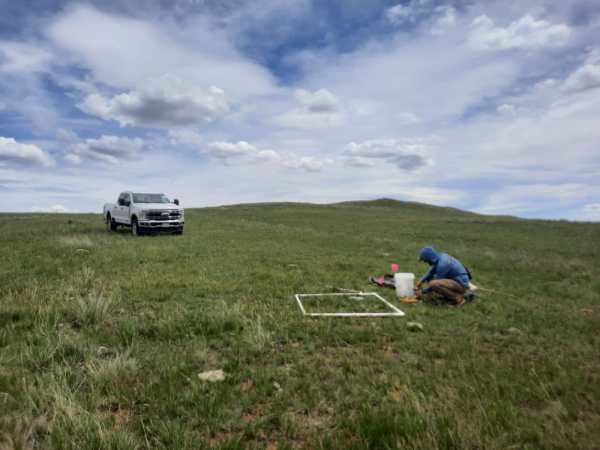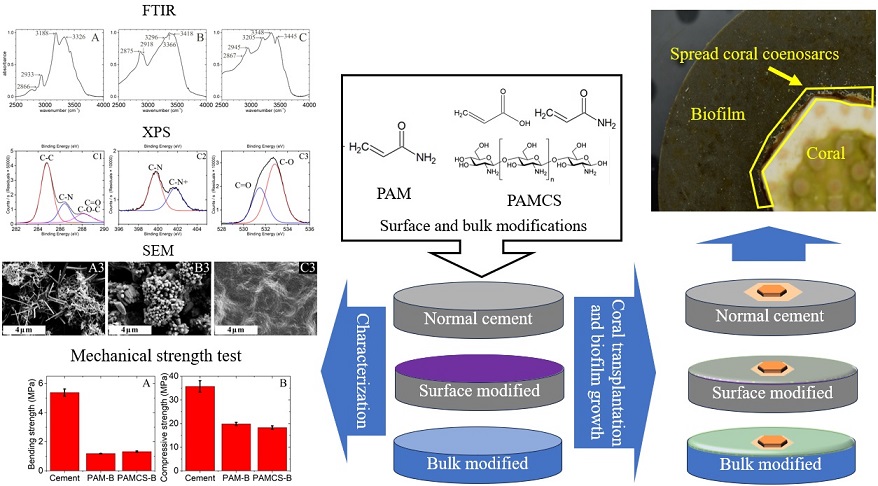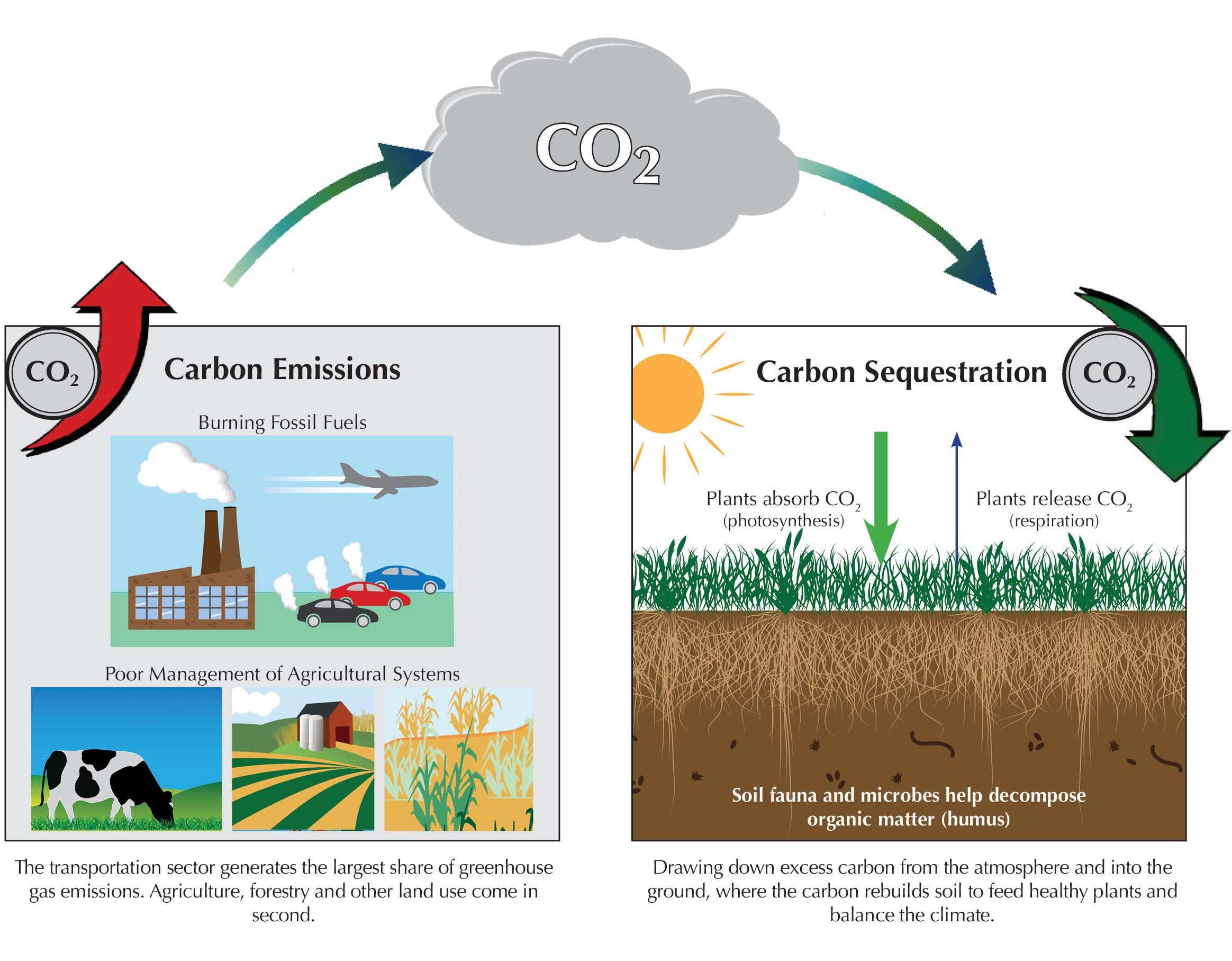A group of Rutgers scientists, led by ecologist Julie Lockwood, met a global challenge and has been recognized internationally for stellar efforts. As part of the Map of Life Rapid Assessments team led by Yale University, the researchers placed second in a global competition, according to an announcement by the XPRIZE Foundation. The nonprofit organization, which designs and manages public competitions to encourage technological developments, awarded the team $2 million out of a $10 million purse for its accomplishments.
Tag: Biodiversity
Major biodiversity report to be issued next week by a global organization.
Expert Available to Comment on Upcoming International IPBES “Nexus” Biodiversity Report The Intergovernmental Platform on Biodiversity and Ecosystem Services (IPBES) Nexus Assessment, a major global scientific assessment on biodiversity, will be released at a global gathering during a hybrid in-person…
Island biodiversity rides on the wings of birds
Bird wing shape — a proxy for long-distance flying ability, or dispersal — is a trait that influences biodiversity patterns on islands around the world, according to research from WashU biologists.
Transplanting healthy reef ecosystems to damaged reefs improves coral health
A pioneering study has revealed significant improvements in coral health through an innovative approach of transplanting healthy reef ecosystems to damaged reefs. The study offers new hope for coral reef restoration and the fight against widespread coral decline.
Rick Bennett Awarded 2024 J. Roger Porter Award
Rick Bennett, Professor in the Department of Plant Pathology at the University of Kentucky, has been awarded the 2024 J. Roger Porter Award.
UN Biodiversity Conference Suspended, Adopting Some Wins, But With Much More To Be Done
More than 190 Countries at CBD COP16 adopted a Global Action Plan for Biodiversity and Health; took steps to align climate and biodiversity agendas; and ensured ecological integrity is included in their plans to protect nature.
From Cali to Belem: United Nations Conventions Must Fight Climate and Biodiversity Crises With United Efforts
It is imperative that governments meeting here at the UN’s Biodiversity Conference take action ensuring an alignment of the world’s biodiversity and climate agendas.
Governments at UN Biodiversity Meeting Are Poised to Take Important Step to Prevent the Next Deadly Pandemic
Governments at the United Nations biodiversity meeting are poised to take an important step to integrate health and conservation and lessen the chances of future deadly pandemics of zoonotic origin, with the adoption of the Global Action Plan for Biodiversity and Health at the Convention on Biological Diversity (CBD COP 16).

Tire-Wear Particles Pose Health Risks to Aquatic Organisms
A recent study highlights the hepatotoxicity of tire-wear particle (TWP) leachates in aquatic environments, impacting gut-liver axis and inducing oxidative damage. The findings suggest potential health risks for aquatic organisms.
At CBD COP16: The World’s Governments Have an Opportunity To Take Significant Steps to Halt the World’s Biodiversity, Climate and Health Crises
Countries from across the globe have gathered in Cali at a pivotal time to push forward an ambitious agenda to save all life on Earth.

Biodiversity Policy in the United States
Biodiversity encompasses much more than the number of species—it includes the variety of ecosystems, the genetic diversity within and between species, and the interactions among species within ecosystems.

Improved Cement to Protect the Living Treasures of Our Coastlines
Artificial coastlines, including human-made dikes and other engineered constructions, can help prevent erosion and protect from storms and flooding. However, ecological functions remain unprotected from many of these structures. So researchers in China have investigated the use of specialized types of cement.
Remembering Ruiliang Pu: a legacy of innovation in remote sensing
Professor Ruiliang Pu, a distinguished figure in the field of hyperspectral remote sensing, left a profound legacy through his groundbreaking work. His research has transformed how we understand forest ecosystems, particularly through the use of advanced remote sensing technologies to monitor forest health. Pu’s innovative methods continue to influence the field, providing essential tools for environmental protection and resource management.
Scientists urge new conservation approach to save vulnerable species from climate change impacts
A team of international scientists alarmed by the loss of biodiversity across the world due to climate change has proposed a new approach to managing vulnerable landscapes, focusing on sites that are least impacted by changing weather.
La WCS et le ministère congolais de l’Économie forestière lancent le projet pilote HIFOR (High Integrity Forest Investment Initiative)
Pour aider à financer la protection des dernières forêts à haute intégrité, le ministère congolais de l’Économie Forestière et la WCS ont lancé ce 30 août le projet pilote HIFOR dans le Parc National de Nouabalé-Ndoki.
Congolese Minister of Forest Economy and WCS Formally Launch Pilot High Integrity Forest Investment Initiative (HIFOR) Project
To help finance the protection of the world’s remaining high integrity forests, Congo’s Minister of Forest Economy and WCS have launched on August 30 Africa’s first HIFOR project in Nouabalé-Ndoki National Park.
Green gold: poplar’s genetic makeover for saline soils
Researchers have discovered that miR319a, a microRNA, significantly enhances poplar trees’ resilience to salt stress, potentially revolutionizing tree cultivation in saline environments. This discovery sheds light on how trees maintain essential ion balance under salty conditions, paving the way for developing salt-tolerant varieties.

Addressing Mercury Challenges on the Global Stage
BRI’s story began in 1989 with the capture of a loon on a Michigan lake. Back then, it was all about the science, but over time, founder Dave Evers began to understand that knowledge for knowledge’s sake wasn’t enough.
How a salt giant radically reshaped Mediterranean marine biodiversity
A new study paves the way to understanding biotic recovery after an ecological crisis in the Mediterranean Sea about 5.5 million years ago.
Mobile species are ‘glue’ which connect different habitats together, study finds
A groundbreaking study conducted across 30 field sites in the southwest UK has revealed the importance of incorporating varied habitats into the landscape at large.
Green warriors: plants on the frontline against microplastics
In an innovative ecological article, researchers have unveiled the potential of phytoremediation to curb microplastic pollution. This approach leverages natural plant processes to absorb and diminish micro and nanoplastics, offering a viable solution for managing environmental plastic pollution.
Rising sea temperatures are pushing Great Barrier Reef to brink
Rising sea temperatures are causing increasing signs of stress and threatening the existence of one of the world’s most diverse and valuable marine ecosystems, Australia’s Great Barrier Reef, according to a new international study from a team of researchers that…
Ancient marine animal had inventive past despite being represented by few species, new study finds
Brachiopods were evolving in new directions but this did not turn into evolutionary success in terms of the numbers of species, researchers at the University of Bristol, the Open University, and the China University of Geosciences have found.
Wetland wonders unfold: aerial systems shed light on ecosystem services
A cutting-edge study revolutionizes coastal wetland mapping by integrating unmanned aerial systems with light detection and ranging (LiDAR) and multispectral sensors. This innovative approach provides detailed elevation data and vegetation analysis, enabling highly accurate classifications of diverse wetland types. The research advances conservation by offering a scalable, efficient, and cost-effective method that is instrumental in climate change mitigation strategies and informs policy-making for coastal resilience.

Coffee Producers Capture Rare Amazon Weasel on Video
A group of coffee producers has filmed an extremely rare small carnivore, the Amazon weasel (Neogale africana), near their shade-grown plots as part of a citizen science monitoring program. This species has never previously been recorded in Bolivia.
Global patterns of Rhododendron diversity explained by island biogeography theory and habitat heterogeneity
• Global Rhododendron hotspots are mainly distributed in the Hengduan Mountains of southwestern China and the southern regions of the Himalayas.
• Rhododendron diversity patterns were most strongly explained by proxies of island biogeography theory (i.e., mountain area) and habitat heterogeneity (i.e., elevation range).
World Nature Conservation Day: Promoting Environmental Awareness and Action
July 28 marks World Nature Conservation Day, a global initiative to raise awareness about protecting our natural environment.
From space to swamp: innovative AI method classifies mangrove species with unprecedented accuracy
Mangrove ecosystems, vital for biodiversity and climate change mitigation, face challenges in monitoring and conservation due to their complex species composition. A new study introduces an AI-driven approach to classify mangrove species with remarkable accuracy, potentially transforming conservation efforts.
Leading-Edge Model Predicts Impact of River Plants on Flood Level
The research team at the Korea Institute of Civil Engineering and Building Technology (KICT) has developed a technology for quantifying the effect of river vegetation patches on flood level changes to aid in better decision-making of river management for balancing ecological benefits and flood mitigation.
Researchers Identify Priority Areas That Deliver on Climate Change, Biodiversity and Health
To meet the imperative of the Kunming-Montreal Global Biodiversity Framework target, which seeks to protect at least 30 percent of the planet by 2030, researchers in an essay in PLOS Biology argue that “conservation areas need to be large enough to encompass functioning ecosystems and their associated biodiversity, and located in areas of high ecological integrity.”
New Fossil Bovids from Kromdraai
New Fossil Bovids from Kromdraai shed light on South Africa’s ancient ecosystems.
Bhutan Hosts Summit Targeting $1 Billion USD for the Conservation of Tiger Landscapes
“Tigers are recovering but this success is fragile.” Joe Walston, EVP of WCS Global
Florida Wildlife Corridor Eases Worst Impacts of Climate Change
Florida is projected to lose 3.5 million acres of land to development by 2070. A new study highlights how Florida can buffer itself against both climate change and population pressures by conserving the remaining 8 million acres of “opportunity areas” within the Florida Wildlife Corridor (FLWC), the only designated statewide corridor in the U.S.
New Study Shows How the Florida Wildlife Corridor Can Mitigate the Worst Impacts of Climate Change
As wildfires, floods and other climate disasters spread across the country, a first-of-its-kind study
finds that Florida’s ambitious Wildlife Corridor has the potential to shield the state from similar
threats.

New fossil rove beetle is a first in AfricaNew fossil rove beetle is a first in Africa
A new species of fossil staphylinine rove beetle from Orapa.
China’s Urban Jungles: How City Parks are Winning the Battle Against Concrete
Recent studies highlight a significant transformation in China’s urban landscape, where the greening of city cores is compensating for vegetation loss in expanding urban areas.
Gardeners can help identify potentially invasive plants
The critical role of gardeners in identifying ‘future invaders’ – ornamental plants that could become invasive species – has been revealed by researchers from the University of Reading and the Royal Horticultural Society.
Biodiversity appears to strongly suppress pathogens and pests in many plant and animal systems, but this “dilution effect” can vary strikingly in magnitude
This study uses forest inventory data from over 25,000 plots to show that the prevalence of tree pests is jointly controlled by the diversity and phylogenetic composition of forests.

New study shows improved rangeland grazing management leads to substantial sequestration of carbon
CarbonSolve, leading global developer of rangeland carbon credits, announces results of a long-term study that presents the first evidence that improved grazing practices implemented at the scale of traditional pastoralist migrations can remove a significant volume of greenhouse gases to soil carbon.
NSU Researcher Helps International Team Create Plan to Protect the Biodiversity of U.S. Waters
Studying the world’s oceans can be difficult – an NSU researcher lead a team that is working to do just that.
Online digital data and AI for monitoring biodiversity
The random information posted online could be used to generate information about biodiversity and its conservation.
Climate change has brought forward the flowering period in Doñana National Park by 22 days
A team at the University of Seville has studied trends in the flowering date of around fifty plant species over the last 35 years in Doñana National Park.
Is the Amazon forest approaching a tipping point?
Global warming may be interacting with regional rainfall and deforestation to accelerate forest loss in the Amazon, pushing it towards partial or total collapse.
Two new freshwater fungi species in China enhance biodiversity knowledge
Researchers have discovered two new freshwater hyphomycete (mould) species, Acrogenospora alangii and Conioscypha yunnanensis, in southwestern China.
NUS scientists develop novel method to estimate biodiversity loss in Singapore over the past two centuries
Scientists from the National University of Singapore (NUS) employed novel statistical methods to reveal the extent of biodiversity loss in Singapore over the past two centuries.
MSU’s ‘Robin Hood’ approach for tracking biodiversity
Researchers at Michigan State University have developed a framework that can help scientists understand trends in biodiversity by using data from well-characterized species to provide insights on data-deficient species. The framework is published in the Journal of Animal Ecology, which provides a how-to guide for researchers and practitioners to implement.
Roughly one in seven species are classified as data deficient by the International Union for Conservation of Nature, or IUCN.
That means these species lack sufficient data for the IUCN to assert a conservation status and, consequently, their need for conservation interventions. With the new framework, researchers and their partners in conservation and wildlife management could better identify which data-deficient species are threatened and in need of help.
AI models identify biodiversity from animal sounds in tropical rainforests
Tropical forests are among the most important habitats on our planet. They are characterised by extremely high species diversity and play an eminent role in the global carbon cycle and the world climate.
Explosion in fish biodiversity due to genetic recycling
Scientists show the extraordinary diversity of cichlid fish in Africa’s Lake Victoria was made possible by ‘genetic recycling’ – repeated cycles of new species appearing and rapidly adapting to different roles in the ecosystem.
UTA research: Wildlife loss five times slower in protected areas
Protecting large areas of land from human activity can help stem the tide of biodiversity loss, especially for vertebrates like amphibians, reptiles, mammals and birds, according to a new study in Nature.
Protecting lands slows biodiversity loss among vertebrates by five times
Protecting large swaths of Earth’s land can help stem the tide of biodiversity loss—including for vertebrates like amphibians, reptiles, mammals and birds, according to a new study published in Nature Sept. 27.